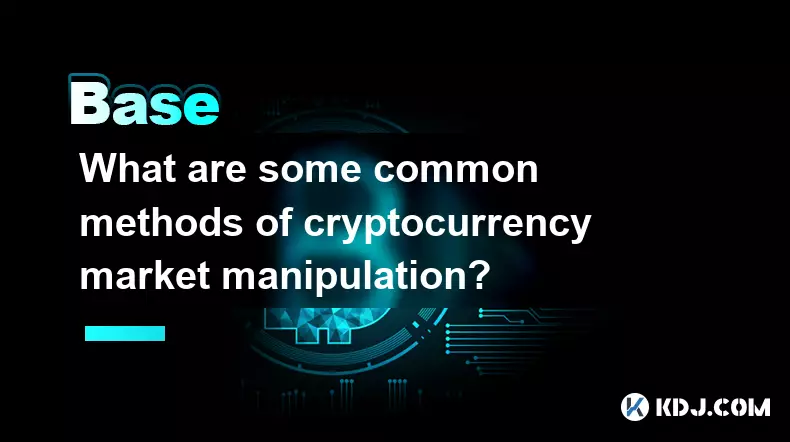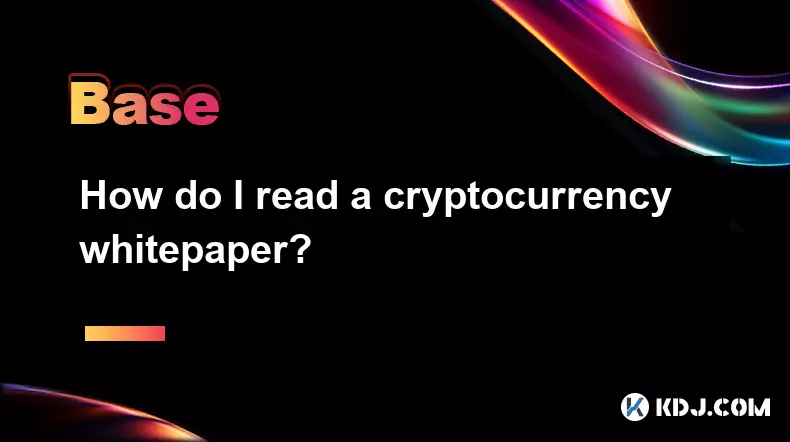-
 bitcoin
bitcoin $123963.239194 USD
1.37% -
 ethereum
ethereum $4529.082464 USD
1.07% -
 xrp
xrp $2.983640 USD
0.71% -
 tether
tether $1.000287 USD
0.02% -
 bnb
bnb $1179.874393 USD
2.99% -
 solana
solana $230.633678 USD
1.55% -
 usd-coin
usd-coin $0.999835 USD
0.03% -
 dogecoin
dogecoin $0.254240 USD
1.34% -
 tron
tron $0.341176 USD
0.15% -
 cardano
cardano $0.842285 USD
0.52% -
 hyperliquid
hyperliquid $48.537896 USD
-0.86% -
 chainlink
chainlink $21.863092 USD
-0.84% -
 ethena-usde
ethena-usde $0.999743 USD
-0.07% -
 sui
sui $3.579561 USD
-0.18% -
 stellar
stellar $0.403418 USD
2.67%
What Is Impermanent Loss?
To identify impermanent loss, compare the value of your deposited assets before and after providing liquidity; a decrease indicates unrealized loss.
Dec 17, 2024 at 02:27 pm

Key Points:
- Definition and Mechanisms of Impermanent Loss
- Identifying and Calculating Impermanent Loss
- Strategies for Minimizing Impermanent Loss
- Examples of Impermanent Loss in Practice
- Risk Management Considerations for Liquidity Providers
- Benefits of Understanding Impermanent Loss
What Is Impermanent Loss?
Impermanent loss is a temporary unrealized loss that liquidity providers (LPs) in automated market makers (AMMs) may experience when the prices of the underlying assets change significantly. It occurs when the value of the LPs' deposited assets changes disproportionately, leading to a decrease in the overall value of their position. Impermanent loss is considered "impermanent" because it can be reversed if the asset prices return to their original values.
Identifying and Calculating Impermanent Loss
To identify impermanent loss, compare the value of the LPs' deposited assets before and after providing liquidity to the AMM. If the total value of the assets has decreased, impermanent loss has occurred.
Calculating impermanent loss involves comparing the value of the LPs' position in the AMM to the value of the same assets held outside of the AMM. The formula for calculating impermanent loss is:
Impermanent Loss = (Value of LPs' position in AMM - Value of same assets outside AMM) / Value of same assets outside AMMStrategies for Minimizing Impermanent Loss
- Provide liquidity to stablecoin pools: Stablecoin pools have lower price volatility, reducing the risk of large price swings.
- Choose pools with similar risk profiles: Select liquidity pools comprised of assets with correlated price movements to minimize divergence and impermanent loss.
- Deposit a balanced allocation of assets: Maintain a close to 50-50 ratio of deposited assets to mitigate the impact of price fluctuations.
- Monitor price movements: Stay informed about the price performance of the underlying assets and adjust your strategy accordingly.
- Provide liquidity for longer periods: Extended time horizons allow for potential recovery from impermanent losses as asset prices fluctuate.
Examples of Impermanent Loss in Practice
- Scenario 1: Assume an LP deposits $1,000 worth of ETH and $1,000 worth of DAI in an ETH/DAI pool. If the price of ETH rises to $1,200 and the price of DAI remains stable, the LP would experience impermanent loss.
- Scenario 2: An LP provides liquidity to a BTC/USDT pool with $500 worth of BTC and $500 worth of USDT. If the price of BTC falls to $400 while the price of USDT remains constant, the LP would suffer impermanent loss.
Risk Management Considerations for Liquidity Providers
- Thorough research: Understand the assets being traded and their historical price movements to assess potential risks.
- Conservative deposits: Consider depositing only a portion of your portfolio to limit potential losses.
- Diversification: Spread investments across multiple assets and consider using stablecoin pools to mitigate price volatility.
- Risk tolerance assessment: Determine your comfort level with impermanent loss and adjust your strategy accordingly.
- Understanding AMM dynamics: Recognize that impermanent loss is inherent in the functioning of AMMs.
Benefits of Understanding Impermanent Loss
- Informed decision-making: Knowing about impermanent loss allows LPs to make informed decisions about providing liquidity.
- Proactive mitigation strategies: Understanding the mechanisms of impermanent loss empowers LPs to develop strategies to minimize its impact.
- Improved risk management: By considering impermanent loss in risk management, LPs can protect their portfolio and minimize potential losses.
- Realistic expectations: Recognizing the potential for impermanent loss sets realistic expectations for LPs and helps them avoid unrealistic assumptions about returns.
FAQs
Q: Why do different liquidity pools have different levels of impermanent loss?A: The level of impermanent loss varies depending on the price volatility of the underlying assets. Pools with stable assets tend to have lower impermanent loss, while pools with volatile assets exhibit higher levels of impermanent loss.
Q: When is impermanent loss realized?A: Impermanent loss is realized when the LP withdraws their assets from the liquidity pool. If the prices of the underlying assets have changed significantly from the time the assets were deposited, the LP may experience impermanent loss or gain.
Q: Is there any way to permanently avoid impermanent loss?A: No, impermanent loss is an inherent characteristic of liquidity pools in AMMs. However, by understanding the mechanisms and implementing risk management strategies, LPs can minimize the potential impact of impermanent loss.
Disclaimer:info@kdj.com
The information provided is not trading advice. kdj.com does not assume any responsibility for any investments made based on the information provided in this article. Cryptocurrencies are highly volatile and it is highly recommended that you invest with caution after thorough research!
If you believe that the content used on this website infringes your copyright, please contact us immediately (info@kdj.com) and we will delete it promptly.
- BlockDAG, DOGE, HYPE Sponsorship: Crypto Trends Shaping 2025
- 2025-10-01 00:25:13
- Deutsche Börse and Circle: A StableCoin Adoption Powerhouse in Europe
- 2025-10-01 00:25:13
- BlockDAG's Presale Buzz: Is It the Crypto to Watch in October 2025?
- 2025-10-01 00:30:13
- Bitcoin, Crypto, and IQ: When Genius Meets Digital Gold?
- 2025-10-01 00:30:13
- Stablecoins, American Innovation, and Wallet Tokens: The Next Frontier
- 2025-10-01 00:35:12
- NBU, Coins, and Crypto in Ukraine: A New Yorker's Take
- 2025-10-01 00:45:14
Related knowledge

How does cryptocurrency achieve decentralization?
Sep 30,2025 at 04:37am
Understanding the Foundation of Decentralization in Cryptocurrency1. Cryptocurrency achieves decentralization primarily through the use of blockchain ...

What are some common methods of cryptocurrency market manipulation?
Sep 27,2025 at 02:55am
Wash Trading and Its Impact on Market Perception1. Wash trading involves an individual or entity simultaneously buying and selling the same cryptocurr...

How do I read a cryptocurrency whitepaper?
Sep 27,2025 at 05:54am
Understanding the Structure of a Cryptocurrency Whitepaper1. Begin by identifying the executive summary, which outlines the project’s core vision and ...

Can I recover lost cryptocurrency?
Sep 25,2025 at 08:18am
Understanding the Nature of Cryptocurrency Loss1. Cryptocurrency operates on decentralized networks, meaning there is no central authority to reverse ...

How do I choose a cryptocurrency investment strategy?
Sep 27,2025 at 03:55pm
Understanding Risk Tolerance in Crypto Investing1. Assessing personal risk tolerance is a foundational step when entering the cryptocurrency market. V...

How can I earn passive income from cryptocurrency?
Sep 23,2025 at 10:18am
Staking Cryptocurrencies for Regular Returns1. Many blockchain networks operate on a proof-of-stake (PoS) consensus mechanism, allowing users to earn ...

How does cryptocurrency achieve decentralization?
Sep 30,2025 at 04:37am
Understanding the Foundation of Decentralization in Cryptocurrency1. Cryptocurrency achieves decentralization primarily through the use of blockchain ...

What are some common methods of cryptocurrency market manipulation?
Sep 27,2025 at 02:55am
Wash Trading and Its Impact on Market Perception1. Wash trading involves an individual or entity simultaneously buying and selling the same cryptocurr...

How do I read a cryptocurrency whitepaper?
Sep 27,2025 at 05:54am
Understanding the Structure of a Cryptocurrency Whitepaper1. Begin by identifying the executive summary, which outlines the project’s core vision and ...

Can I recover lost cryptocurrency?
Sep 25,2025 at 08:18am
Understanding the Nature of Cryptocurrency Loss1. Cryptocurrency operates on decentralized networks, meaning there is no central authority to reverse ...

How do I choose a cryptocurrency investment strategy?
Sep 27,2025 at 03:55pm
Understanding Risk Tolerance in Crypto Investing1. Assessing personal risk tolerance is a foundational step when entering the cryptocurrency market. V...

How can I earn passive income from cryptocurrency?
Sep 23,2025 at 10:18am
Staking Cryptocurrencies for Regular Returns1. Many blockchain networks operate on a proof-of-stake (PoS) consensus mechanism, allowing users to earn ...
See all articles










































































